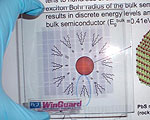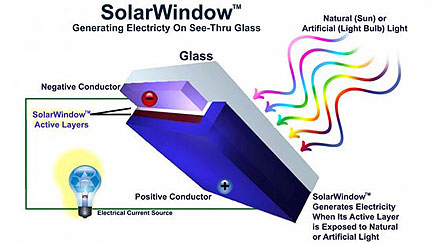Cricket Technology: Less OR More?

Predictive tools like Hawkeye and Snickometer may well turn out to be the next innovations that will improve umpiring decisions, just like the third-umpire. Fear of technology should not be the only reason for discarding them -- they deserve a fair trial.
Technology In Cricket:
I was watching Cricket Classics on television a few days back. For the uninitiated, Cricket Classics is a program that shows highlights of old cricket matches. Being a cricket fan since childhood, I have watched a few of those matches live on television. But now, when I watch those highlights, one thing that strikes me is, how much the live coverage of Cricket has evolved in the last few years: the action replays from multiple angles, the stump vision, the statistical information bytes, the third-umpire, the wagon wheel and other visual aids, frame-by-frame replays, etc. Many of these technologies have enriched the experience of watching the game on television. It is really hard to say how much they have contributed to the popularity of cricket telecasts, but surely, they're one of the factors.
More recent tools like the Hawkeye and Snickometer, are the center of controversy these days, with some of the former cricketing greats questioning their value to the game. More prominent being Dennis Lillee, the great Australian fast bowler, who slammed Hawkeye recently as:
"I have no problems with technology that assists in helping umpires adjudicate correctly on run-outs and stumpings, but I am afraid 'hawkeye' and his mate, the 'snickometer', are pure gadgetry."Predictive Tools: The Next Step?
Hawkeye is different from other technologies used in Cricket, in that it is a predictive tool. The way Hawkeye is supposed to work is, it observes the trajectory of a delivery at various points, till say it hits the batsman's pads, and then predicts its trajectory past that point based on various additional factors, like speed, how it got off the pitch, etc. Now, I understand that there are limitations to the predictive curves that Hawkeye gives, that it's not 100% right, and probably won't be in the near future. But then before a gadget is discarded, we must measure its effectiveness -- both absolute and w.r.t. the alternatives!
How does one measure absolute effectiveness of a predictive tool? A simple way would be, to record trajectories of an assorted deliveries bowled by different kinds of bowlers in different condition -- without any batsmen there to play the deliveries -- which means the complete reference curves would be with us for comparison. Then we should simulate how Hawkeye would predict decisions, by invoking a Hawkeye simulator at random points in these test cases. Since we already know the results, we can measure effectiveness of the gadget. We should probably start with an a-priori consensus minimum performance requirements that we expect from the tool, to be considered effective judge (or a helper tool) of LBW decisions.
Now for measuring effectiveness w.r.t. the alternatives: what are the alternatives here? The on-field umpires who do the same prediction, in a split second! What is their success rate? Most experienced of the current umpires -- David Shepherd and Steve Bucknor -- missed plumb LBW decisions, in the India's tour to Australia that concluded recently, screwing up India's chances of winning a series down-under. LBW is probably the most misjudged decision in cricket, even on the international level. Few years back, run-outs and stumpings would have competed with it, but now thanks to the third-umpire, that's changed. Technology -- which was questioned in a similar manner when it was being introduced - has supplemented the umpires. Even with Snickometer, can the best (and I'm not even talking about the average) umpires beat Snickometer consistently in judging a thin edge (especially in noisy stadiums like Eden Gardens), or in distinguishing an edge from bat hitting the pad?
Mistakes: Honest and Dishonest
We must also consider that the umpires are, after all, human -- meaning they can be incompetent, or they can be plain biased! It's not uncommon for some teams to change the bowler's end just to get him from a more sympathetic end. It's not uncommon for umpires to be pressurized by bowlers, fielders and indeed the crowds. It's not uncommon for umpires to hold personal grudges against some players. All these factors affect their effectiveness. This, when cricket has become a high-profile game, viewed by millions. This when one mistake -- honest or otherwise -- can completely turn the outcome of the game!
It's surprising that former greats have reservations about such gadgets, even when they're being used only to judge the judges. Remember? These gadgets are used by the TV crews only to asses the umpiring decisions, which they will do anyways, based on visual/audio evidence). When third umpires were being introduced, there was a similar commotion in some ex-players. Maybe it's just their age and their archaic fears that bring out such knee jerk comments. Today no one doubts the value of the third-umpire. It's a valuable assistance to the umpires. Even visual aids like replays, can go long way in improving the LBW decisions -- did the ball hit outside the line of off-stump? Did it pitch outside the leg-stump? We don't need predictive tools for this! Visual evidence is enough; something which every television viewer has at his disposal! Umpires will be judged more and more in these televised days. It's cruel to leave them without the aids that can enhance their effectiveness. We should be careful not to throw the baby out with the bathwater in case of predictive tools because of our implicit discomfort with technology. We must evaluate them objectively.







































